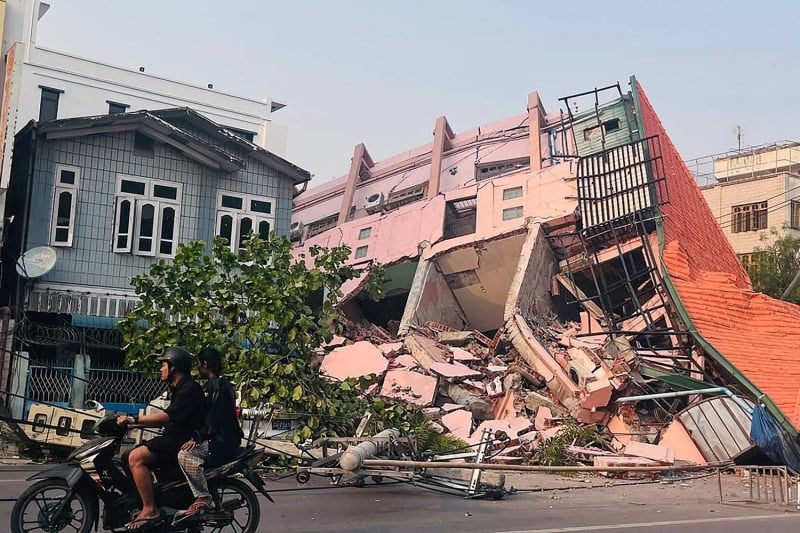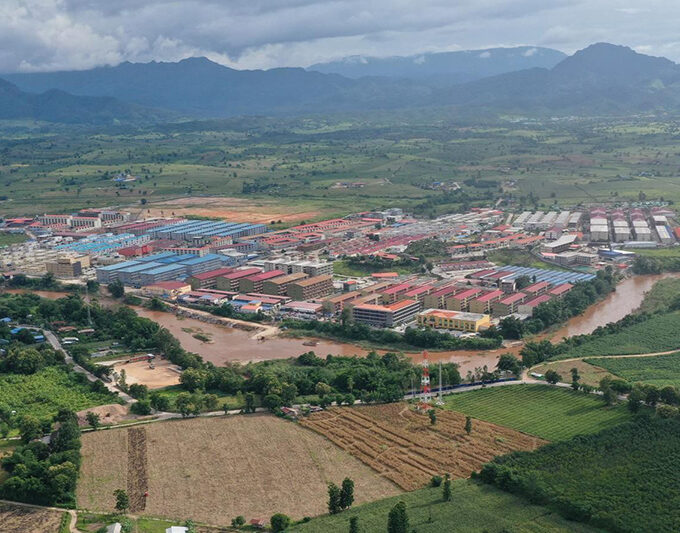On 28 March 2025, at 12.50 p.m. (Myanmar time), a powerful earthquake struck the Sakaing region of central Myanmar, with an epicentre near the country’s second-largest city, Mandalay, and a magnitude of 7.7 on the Richter scale. The earthquake not only caused huge casualties and property damage in Myanmar, but also affected neighbouring Thailand and China’s Yunnan Province, with buildings and infrastructure in the epicentre area suffering heavy damage, thousands of injuries, and an as-yet-uncompleted count of missing persons.
Earthquake Overview and Damage
The quake, one of the strongest in Myanmar in recent years, was centred in the Sakaing area, about 100 kilometres east of Mandalay. According to the latest official reports from Myanmar, the earthquake has killed more than 3,000 people, injured thousands, and left hundreds missing. Rescue efforts began rapidly after the earthquake with support from the Myanmar government and international organisations. Most of the casualties were concentrated in cities and villages around the epicentre, with houses collapsed and roads badly damaged. Electricity was disrupted and communication facilities destroyed in some of the affected areas, affecting the smooth progress of the rescue work.
Thailand also reported at least 26 deaths and the collapse of a 33-storey building under construction in Bangkok, injuring dozens of people. The disaster also triggered ground shaking in neighbouring China’s Yunnan Province, slightly affecting buildings and transport facilities in some border cities.
Relief Efforts and Challenges
Myanmar faces multiple difficulties in its domestic relief efforts. Due to the complex domestic situation in Myanmar since the military coup in 2021, the conflict between the military government and the opposition has made it difficult for the post-disaster relief work to be carried out smoothly. Although the Myanmar government has activated the emergency relief response, relief work in some affected areas is still affected by the political situation. Particularly in areas controlled by anti-government armed groups, it is difficult for relief supplies and personnel to enter.
In addition, Myanmar’s already weak domestic infrastructure, especially in remote areas, is difficult to access, and many villages are cut off from the outside world, which poses a huge challenge to rescue teams. Nevertheless, the international community and various aid organisations have begun to help. The International Red Cross, the United Nations, as well as aid teams from China, India, Russia, and other countries are actively participating in the process, trying their best to alleviate this humanitarian crisis.
International Aid and Co-operation
In the face of the disaster, the international community has responded quickly. China, India, Russia, and other countries have dispatched rescue teams and materials to Myanmar to provide emergency assistance. The United Nations has urgently allocated 5 million US dollars for disaster relief and quickly deployed aid materials to help the affected people tide them over their difficulties.
In addition, the European Union and the United States have also indicated that they will provide financial and material support through international cooperation. The American Red Cross has provided emergency medical assistance to Myanmar and Thailand and plans to provide medical equipment and medicines to the affected areas. Although the assistance from various countries and international organisations is urgently needed, the smooth implementation of international assistance still faces many difficulties due to the complex political situation in Myanmar.
In Thailand, although the earthquake has caused some damage, the rescue work has been relatively smooth. The Thai government has deployed a large number of emergency teams, while international assistance has begun to enter the country. Considering the geographical proximity of Thailand and Myanmar, Thailand has expressed its willingness to coordinate cross-border assistance with Myanmar to do its best to mitigate the consequences of the disaster.

Impact on Tourism
The earthquake has also had a profound impact on the tourism industry. Thailand and Myanmar are important tourist destinations in Southeast Asia, and the earthquake has undoubtedly dealt a blow to the tourism industry in both countries. Major tourist attractions in cities such as Bangkok and Chiang Mai suffered varying degrees of damage. In particular, the collapse of a high-rise building in Bangkok has posed a threat to international travellers’ sense of security.
Myanmar’s tourism industry, which has already suffered somewhat due to political and security issues, has been further affected by the earthquake. Many tourists planning to travel to Myanmar have cancelled their trips, while some travel companies have begun to face financial pressures. The global tourism community needs to further assess the recovery situation to ensure the safety of tourists and the gradual recovery of the local economy.
Outlook and Reflection
The earthquake has brought deep devastation to Myanmar and neighbouring countries, while exposing the difficulties of delivering humanitarian assistance in a complex political environment. The international community needs to strengthen cooperation and push relief efforts towards more effective implementation. While respecting the sovereignty of States, they should work together to ensure that assistance can effectively reach the affected areas and alleviate the post-disaster humanitarian crisis.
Post-disaster recovery will be a long process, and Myanmar needs to face not only the reconstruction of infrastructure but also the resolution of internal social and political conflicts. How to achieve social reconciliation in post-disaster reconstruction and promote long-term stability of the country has become a common issue for the Myanmar government and the international community.
With global climate change and frequent natural disasters, similar catastrophes are likely to become more common. How to respond to large-scale natural disasters and enhance global disaster response capacity, especially in countries with complex political situations, remains an important issue for the international community. Through multilateral co-operation and effective crisis management, countries around the globe will be better able to cope with future disaster challenges.
Conclusion
The earthquake disaster in Myanmar has once again awakened the world to the fact that political stability, international co-operation, and efficient relief mechanisms are crucial in the face of sudden-onset disasters. In today’s world of deepening globalisation, cooperation and support among countries are even more important. Only through joint efforts can we bring faster recovery to the affected areas, alleviate the suffering caused by disasters, and ultimately achieve sustainable global development and stability.












